Sign up for daily news updates from CleanTechnica on email. Or follow us on Google News!
With winter in full swing in the Northern Hemisphere, it’s time for Tesla Model 3 and Model Y owners to prepare for road trips in the cold weather. Last month, I offered up 11 Tips for Driving and Charging your Tesla in Cold Weather, but here are some recommendations for ten items to keep in your Tesla for cold weather travel. I didn’t include basic stuff like a good snow brush and ice scraper, or even a compact snow shovel and a set of tire chains if you’re heading for somewhere with lots of snow. Most of the recommended items are specific to Teslas and other EVs.
Many cold weather issues including frozen door handles and stuck charge port latches can be prevented by simply pre-heating your car using the “Defrost Car” feature in the app 20-30 minutes before you need to drive anywhere. But in case you forget, these winter EV essentials will come in handy on your next cold weather road trip.
Most of these items can be purchased at any auto parts store or at your local Walmart or Target. I’ve provided links to purchase them online for your convenience. Pick up a few for yourself or a Tesla-driving loved one for a little extra peace of mind on those long Winter drives.
Please note: CleanTechnica is reader-supported. Purchases made using links on our site may result in commissions for the site and its writers. Your support is appreciated.
#1: Tesla Mobile Connector (or Comparable Portable EV Charger)
While the Tesla Supercharger network is both extensive and reliable, and the Tesla Navigation system automatically routes you to Superchargers on a road trip, it’s always good to be prepared for the unexpected. Maybe there’s a highway closure due to extreme weather or maybe you arrive at your final destination with less than expected battery range. In these cases, it’s best to keep your Tesla Mobile Connector or a comparable portable EV charger in your trunk or frunk for emergencies. This allows you to plug into any available 120V or 240V outlet and get a few extra miles of range when you find yourself far from your home charger or a high speed public charger.
Since Telsa includes a J1772 adapter with all cars, you can buy any 3rd party mobile EV charger with a J1772 connector and use Tesla’s J1772 adapter to connect it to your car. And if you’re getting one of these portable chargers just for emergency purposes to keep in your car, there are several great choices for Level 1 (120V) or Level 2 (240V) charging. Personally I prefer one that works with both 120V and 240V outlets so I have more options and less gear to carry around.
The Tesla Mobile Connector comes with a 120V NEMA 5-15 plug and a 240V NEMA 14-50 plug. The plug itself is detachable so you can use either plug depending on what’s available. The NEMA 5-15 plug is the most common type of household power plug in North America. The NEMA 14-50 240V plug is also popular and frequently found at RV parks and campgrounds. Using the Tesla Mobile Connector at 120V, you can gain up to 6 miles/hour of range and at 240V, you can get around 30 miles of range per hour on a Model 3 or Model Y. There are other specialty plugs you can order from Tesla in case you want to plug into a 240V electric dryer outlet, a stove outlet or a 20-Amp/120V outlet.
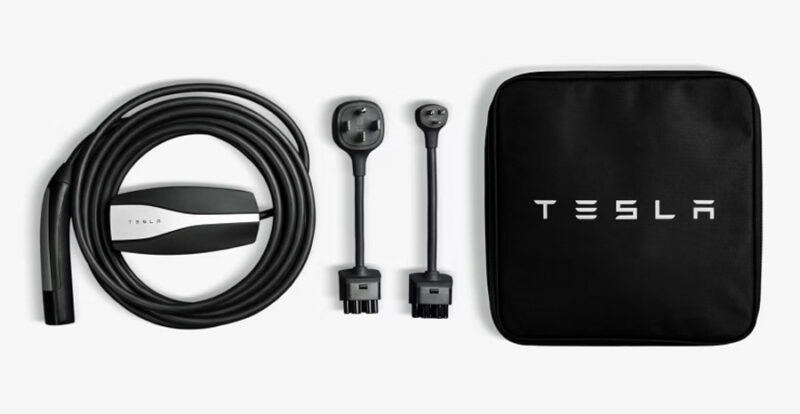
Another fine choice is Lectron’s Level 1/Level 2 (120V/240V) EV combo charger. It includes a universal J1772 connector and detachable power plugs. The company expects to begin shipping this mobile charger later this month (February, 2024). Like the Tesla mobile connector, the Lectron combo charger comes with a NEMA 5-15 120V plug and a NEMA 14-50 240V plug making it compatible with the most common 120V and 240V outlets. The J1772 plug makes it compatible with most non-Tesla EVs but you can also use it with your Tesla using the Tesla/J1772 adapter.
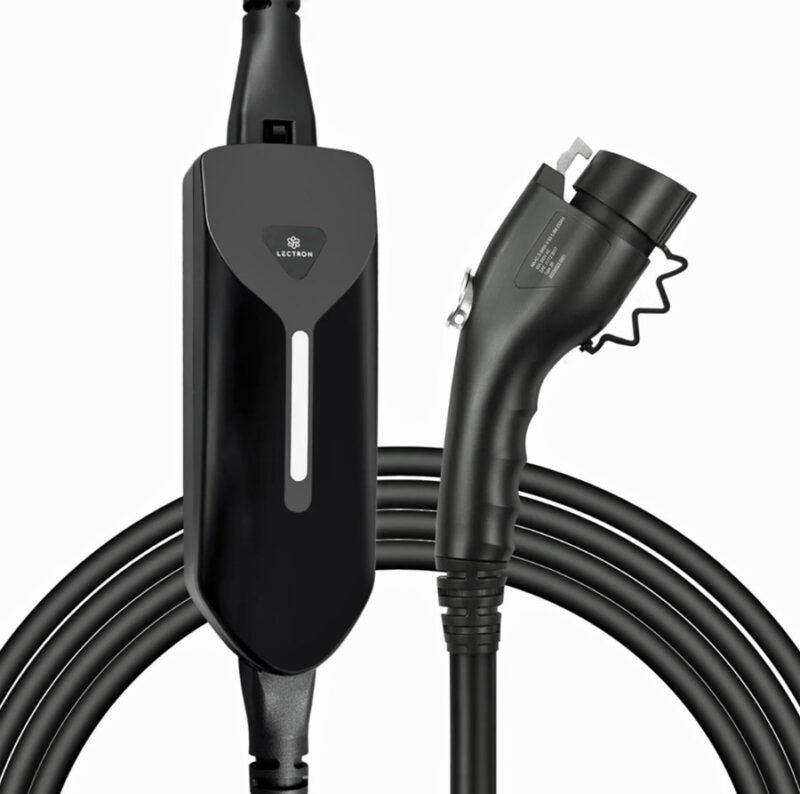
#2: A Good Extension Cord
Most mobile EV chargers come with a long charging cable: the Lectron charger above comes with a 16 foot cable and the Tesla Mobile Connector has a 20-foot cord. But sometimes you may find yourself a bit further from an outlet. While constant use of an extension cord is not recommended by Tesla, it’s fine to use one in a pinch, as long as the cord itself is thick enough (low enough gauge) to carry the requisite voltage and current. 120V charging peaks at 16 amps (if you’re using a NEMA 5-20 plug) or 12 Amps if you’re using the standard NEMA 5-15 plug. I regularly use (and recommend) a 15-Amp/12 gauge (12AWG) cable with my Tesla Mobile Connector. This waterproof outdoor-rated 15-Amp cable is available on Amazon for around $30 in a 50 foot length or $50 for 100 feet:
#3: Rubber Conditioner to Prevent Frozen Windows
Because Teslas have frameless car windows, when you open the door, the window drops a few centimeters automatically to clear the glass from the door frame. After a snowstorm or freezing rain, the windows can sometimes get frozen in place, preventing them from lowering. One thing I’ve learned from my Tesla-owning friends in Finland is that it’s a good idea to apply some silicon rubber conditioner to the rubber trim inside the doors before the weather gets cold. It only takes a few minutes and it will prevent the windows from sticking to the rubber seals in the winter. It also extends the life of these rubber seals so win, win! The one that gets top marks from our Finnish friends is called Gummi Pflege Stift (“Rubber Care Pen”) and it’s made by German company Nextzett. It’s available on Amazon for around $12.
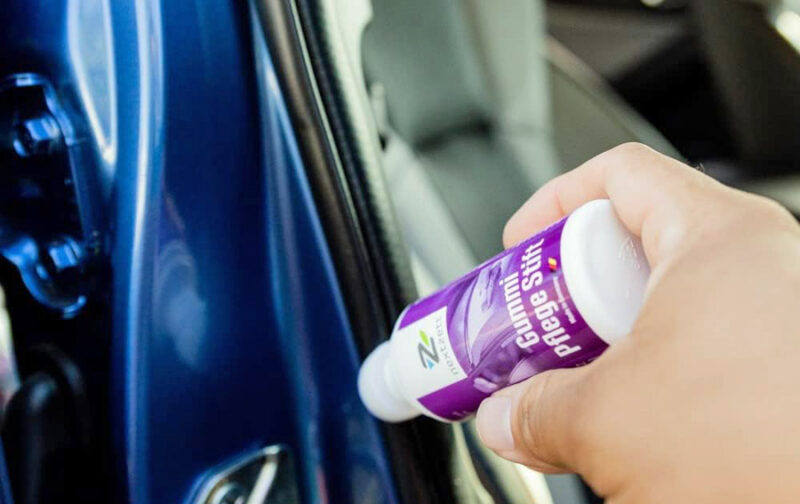
#4: WD-40 Silicon Lube for Door Handles And Charge Port Door
Haters love to hate on Tesla’s non-traditional flush door handles. But the handles are flush for a reason: efficiency. By making the handles flush to the car, you can reduce air drag thereby increasing range. This is why many other EV makers have followed suit. But having the handles flush to the car can make them a little more prone to freezing in place. You can usually get them unstuck with a few knocks from the side of your fist, but if you apply a bit of lubrication in advance, you can prevent them from freezing up in the first place. WD-40 Silicon formula works particularly well for this. It’s best if you hold the handles open, spray some lube into the pivot point which is right where the handle on the Model 3 and Model Y angles up, then open and close the handle about 10 times to work the lube into the hinge. Spray a bit into the charge port door mechanism while you’re at it.
#5: De-Icer For Doorhandles, Windows, Mirrors and Charge Port Door
If you forget to pre-treat the door handles before a bout of cold weather or have excess ice built up on your door handles, charge port door, windows or side mirrors, a few sprays of a good de-icer can melt that ice in short order and get you on your way quickly. Pre-heating your car using the “Defrost Car” feature in the Tesla app can usually prevent door handles and windows from getting stuck, but if you forget to do that, a few sprays of de-icer will do the trick. I keep a spray bottle of Prestone de-icer in my trunk and it works well for melting that pesky ice.
#6: Hand-Warmers – They’re Not Just for Hands
The media had a field day earlier this winter when some Tesla drivers ran into trouble charging at a Supercharger station outside Chicago in frigid weather. Drivers abandoned their cars when they ran out of juice or couldn’t find an available charging stall. There were a few things that contributed toward this situation, but two of the issues were frozen charging ports and snow-pack on the actual Supercharger charging cables.
In sub-zero temperatures, the charging cables on the older V2 (150kW) Superchargers can stiffen up, which causes them to fall out of their holsters. If they fall into snow, this can pack snow into the charging cable end. This snow will prevent the charger from making a connection with your charge port. One solution is to put the charging cable into your heated car for a few minutes to thaw. But you can do the same thing with a hand warmer. Simply activate and hold the handwarming packet on or near near the charging cable end until the snow melts, shake it off and plug it in. The newer V3 and V4 chargers don’t have this problem as these cables include a liquid coolant which also acts as an antrifreeze in cold temperatures.
Another issue that can prevent you from being able to charge a Model 3 or Model Y in frigid weather is a stuck charging port latch. This is the place where the supercharger cable plugs into your car. In extreme cold weather, the charge port latch can get locked up, preventing it from securely latching to the charge cable. A few minutes with a hand warmer fixes this issue as well.
In early 2020, Tesla added a heating element inside the charge port that prevents this problem from occuring. So if you have a Model 3 built after March 2020 or any Model Y, the “Defrost Car” feature also heats up the charge port, preventing the latch from misbehaving in the cold. But in case you forget to preheat your car, a few of these handwarmers in your glovebox may come in handy. If you don’t like the disposable ones, you can find rechargeable electric hand warmers as well.
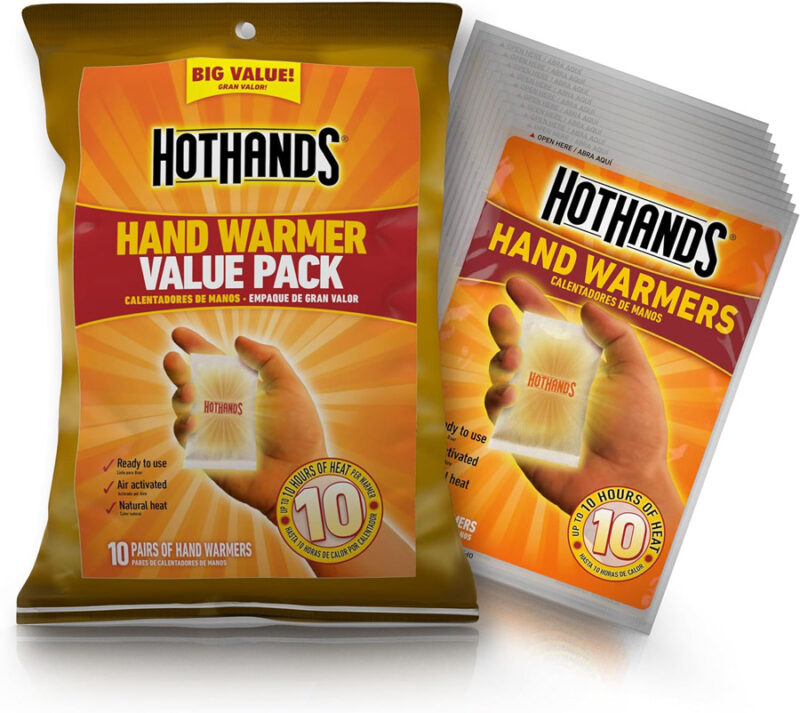
#7: Tire Repair Kit or Spare Tire
As is the trend with many new cars, Tesla Model 3 and Model Y do not come with a spare tire. Tesla does provide free roadside assistance within the original 4 year/50,000 mile warranty. But if you’re stuck in the cold with a flat and don’t relish waiting for road service, a tire repair kit can come in handy. Tesla sells their own branded version in the shop, but really any tire compressor and can of “slime” will do. Fix-a-flat is one brand that works well in most situations.
These tire slime kits are only meant for emergency use. They can temporarily fill a small puncture and allow the tire to hold air enough to drive it home or to a repair shop. It’s not recommended that you drive more than 200 miles or over 50 MPH (80 km/h) with this type of repair. Depending on the damage, you may be able to have the tire professionally repaired at any tire shop or at a Tesla service center.
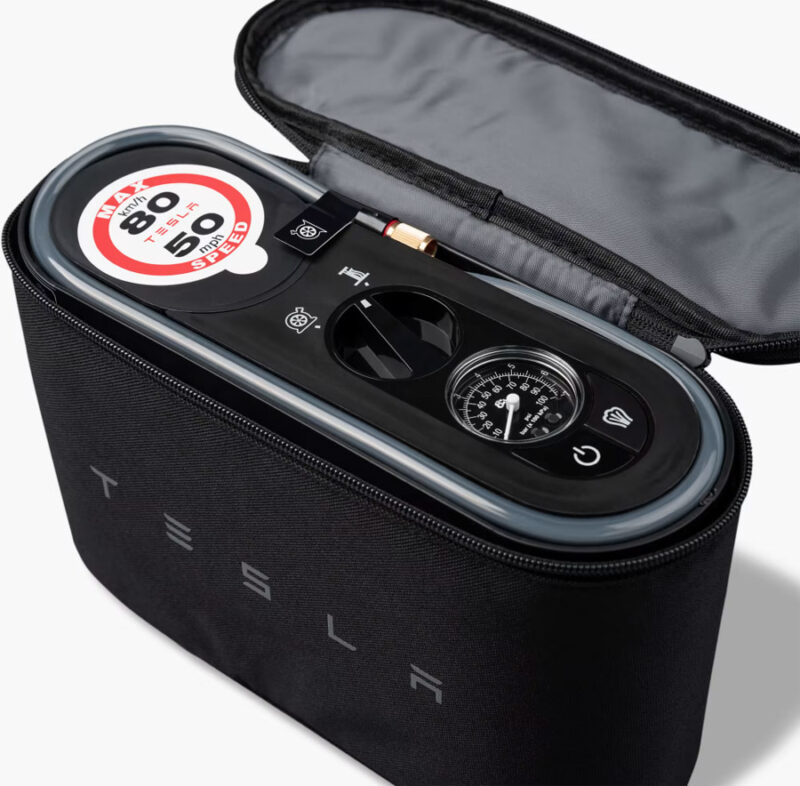
Another more long-lasting option is a tire plug kit. These are available at any auto parts shop or online. While these require much more effort than a simple can of “fix a flat,” they also generally hold up better. In many cases, a plug repair can be done without removing the wheel from the car or even lifting the car on a jack. A proper plug repair can hold up for the life of the tire. But if you’re not a pro, it’s always a good idea to bring your car into a tire shop to have the repair inspected. In some cases, the plug may need to be replaced with a patch (done from the inside of the tire) or, depending on the severity or location of the damage, you may need a new tire.
For those who want a more professional solution, you can buy a complete spare tire kit for Model 3 or Model Y. These kits come with a tire iron, scissor jack, a spare wheel and tire in a nice carrying case. Modern Spare was the first to offer these kits but now they have competition from a company called StanceMagic. Both companies make versions for Tesla Model 3 and Model Y. The Modern Spare for Model 3 has multiple bolt holes allowing it to work with both the standard Model 3 and the Performance trim. The StanceMagic version has a different size for the Performance Model 3 so be sure to order the correct version for your car. The only drawback of this solution is that these kits take up a bit of space in your trunk or hatch. It is possible to modify the Model Y sunk (sub-trunk) in order to fit one of these back there and still keep your full hatch space available for storage on a trip. Here’s a video with one way to do this without any cutting.
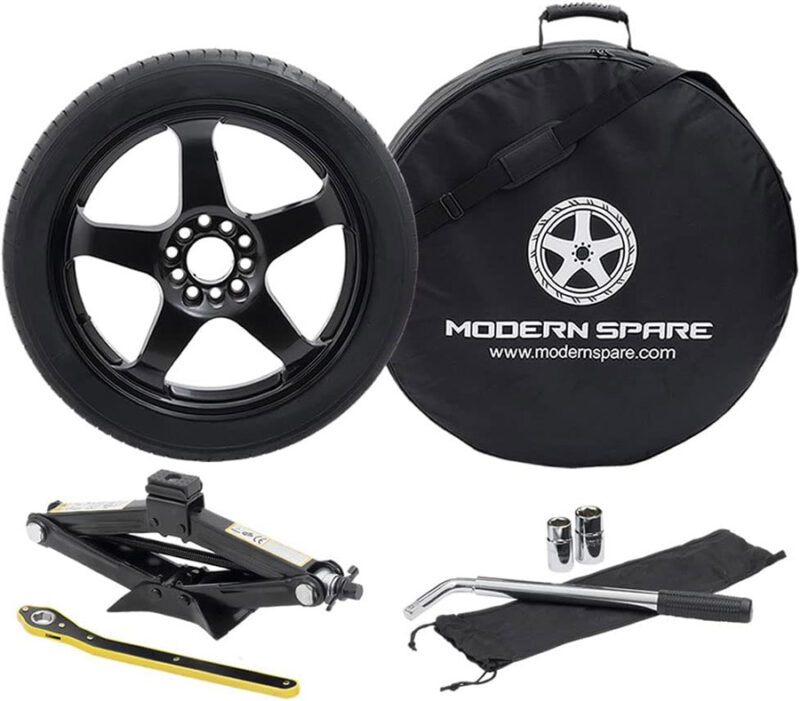
Check out Modern Spare and StanceMagic Spares on Amazon:
#8 – Mylar Blankets – Trap That Heat
Even with the best planning and preparation, emergencies happen. Storms can close highways or you might have an accident off the beaten path in an area with no cell reception. And even though a Tesla Model 3 can keep you toasty warm in sub-zero temperatures for up to two days on a full charge – it’s always best to be prepared for the worst. Inexpensive Mylar emergency blankets can capture and reflect back up to 90% of your body heat. Pick up a 4-pack for about $10 and leave them in your glove box or trunk. You’ll probably never need them but if you do, you’ll be happy to have them.
#9: A 12V Battery Booster
Cold weather is tough on batteries of all kinds, including the low voltage 12V battery in Model 3 and Model Y. If you do manage to fully deplete your high voltage battery, then the car’s 12V battery will take over powering up the car’s computer and climate control system. And if you’re waiting around in frigid weather for a tow truck, the 12V battery may die as well. And if the 12V battery dies, you won’t be able to charge the main battery. If this happens a simple 12V Battery Booster can be connected to the car’s 12V battery to wake up the car and allow it to start taking a charge. You’ll also need one of these to put the car in “Transport Mode” if you do need to get the car towed and your 12V battery is flat.
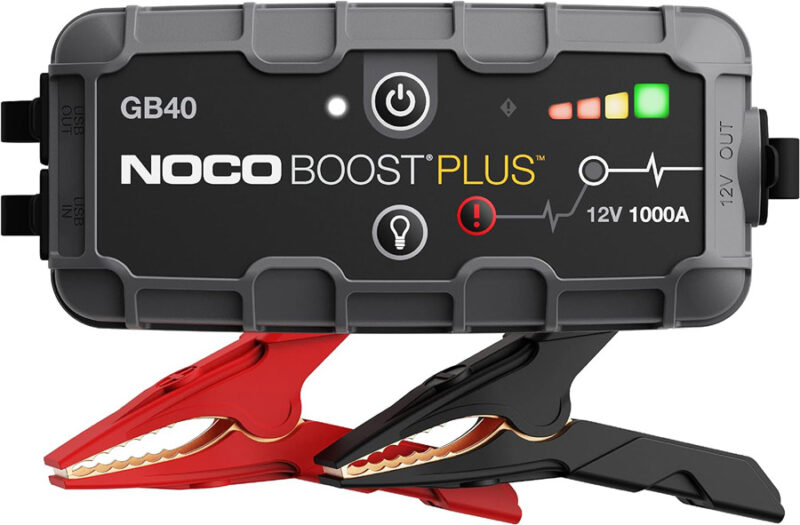
I’ve been carrying one of these NOCO battery boosters around in my ICE cars and boat for years. And after running out of juice once in my Model 3, I’ve kept one of these in my EV as well. It’s a good idea to top off the booster’s charge once a year or before a long road trip to make sure it’s ready for action.
#10: A 9V Battery
Yes, I’m talking about those little rectangular 9V batteries that you normally find in a smoke detector. This may seem like a weird one, but let me explain. Let’s say you have run out of power and even managed to drain the 12V battery as well. In order to boost the 12V battery in a Model 3 or Model Y, you need access to the frunk (the front trunk) where the 12V battery is stored. And guess what? The frunk latch is electrically actuated. No power, no frunk access. But Tesla provides a workaround. In the front bumper of the Model 3 and Model Y you’ll see a small disc shaped cover. Gently push the side of this disc in and it will pop out to reveal two wire leads. If you connect 12 volts (or even 9 volts) to these wires when the 12V battery is dead, it will activate the frunk release, giving you access to the frunk. Remove the vent cover at the top/back of the frunk to reveal the 12V battery, connect your battery booster to the 12V battery and your car will wake up and begin to accept a charge at the charging port.
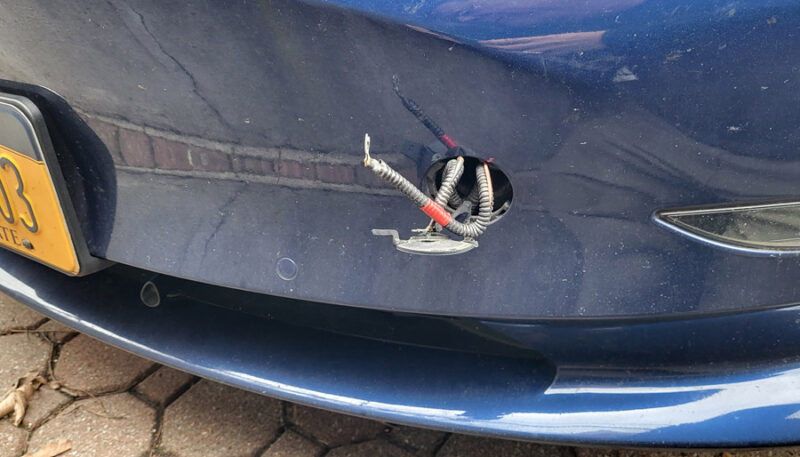
Of course, instead of a 9V battery, you can also connect your battery booster leads (item #9 above) to those same wires to trigger the frunk release. But if you keep your battery booster inside your frunk, then that little 9V battery will come in handy. Just don’t store that 9V battery in your frunk (or in your glovebox, which also needs electricity to open). I keep one in my center console just in case.
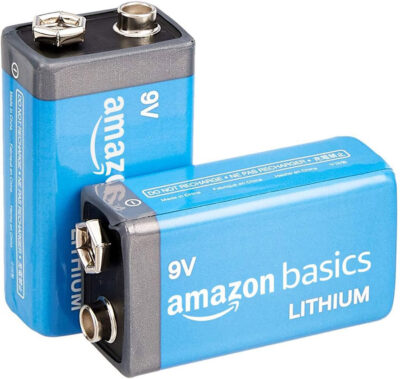
The Bottom Line
If you or a loved one drives a Tesla Model 3 or Model Y in frigid weather regularly, the above items will help provide peace of mind and may save a lot of time and aggravation on a winter road trip. Of course, you may never need them, but it’s always a good idea to be prepared.
Got any other suggestions for winter EV essentials? Let us know in the comments.
Looking to buy your first Tesla? Be sure to ask a Tesla-owning friend or family member for their referral link. If you need a referral code for a bonus on the purchase of a Tesla car or solar power system, feel free to use my referral link: https://ts.la/christopher55570. You can also schedule a Tesla demo drive at a location near you and see first hand why Tesla is one of the world’s top-selling car brands.
Have a tip for CleanTechnica? Want to advertise? Want to suggest a guest for our CleanTech Talk podcast? Contact us here.
Latest CleanTechnica TV Video
I don’t like paywalls. You don’t like paywalls. Who likes paywalls? Here at CleanTechnica, we implemented a limited paywall for a while, but it always felt wrong — and it was always tough to decide what we should put behind there. In theory, your most exclusive and best content goes behind a paywall. But then fewer people read it!! So, we’ve decided to completely nix paywalls here at CleanTechnica. But…
Thank you!
CleanTechnica uses affiliate links. See our policy here.



